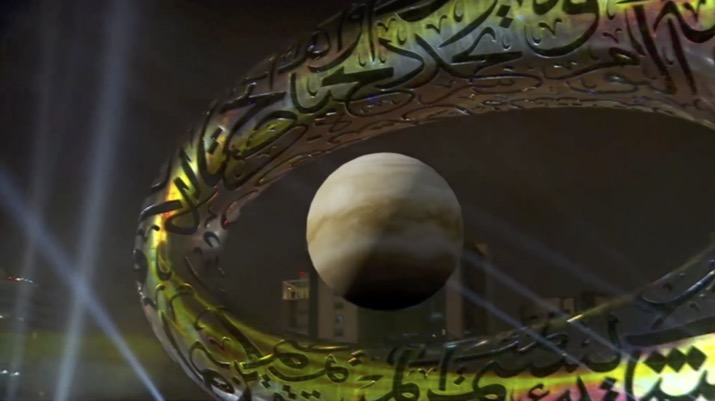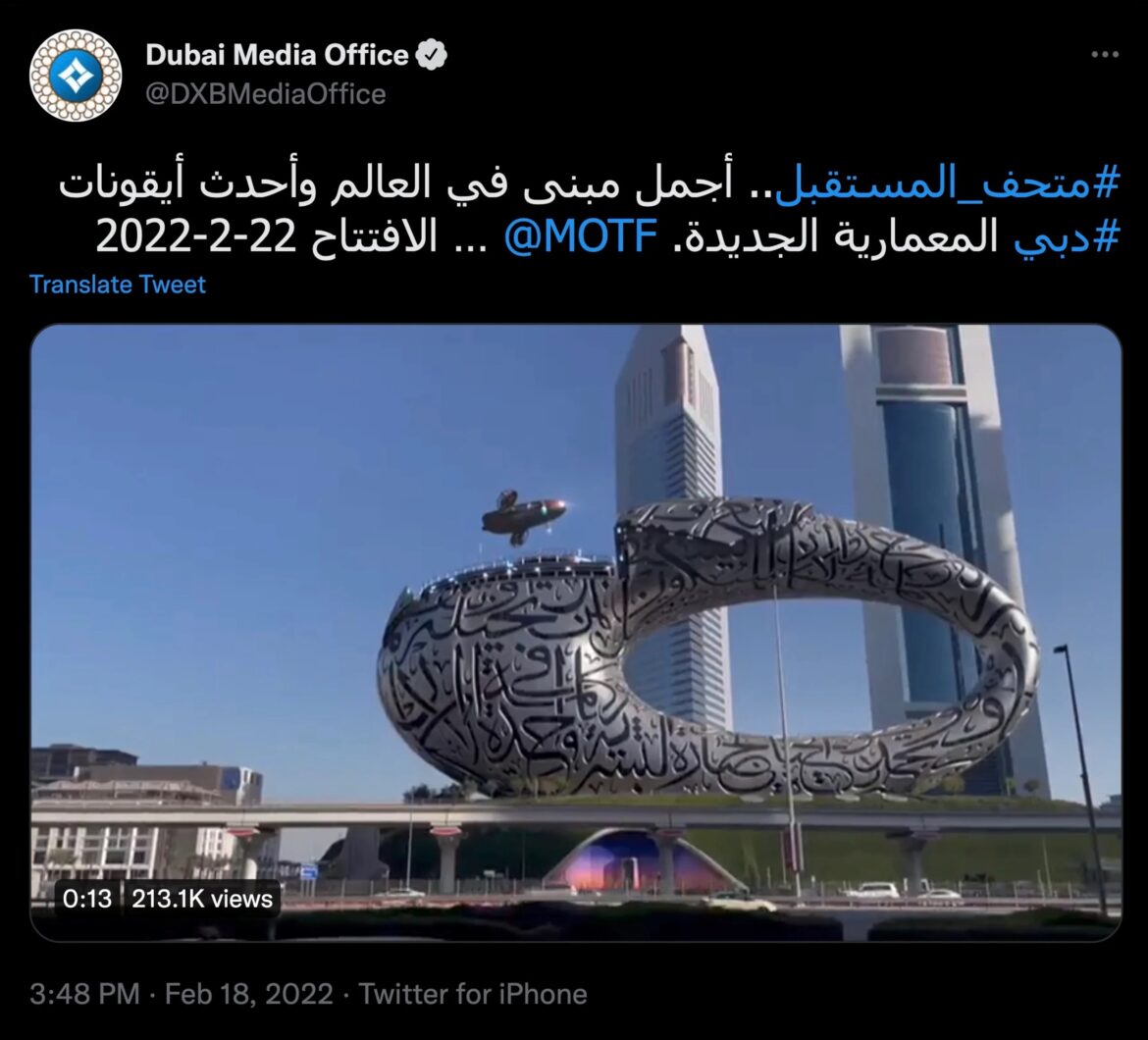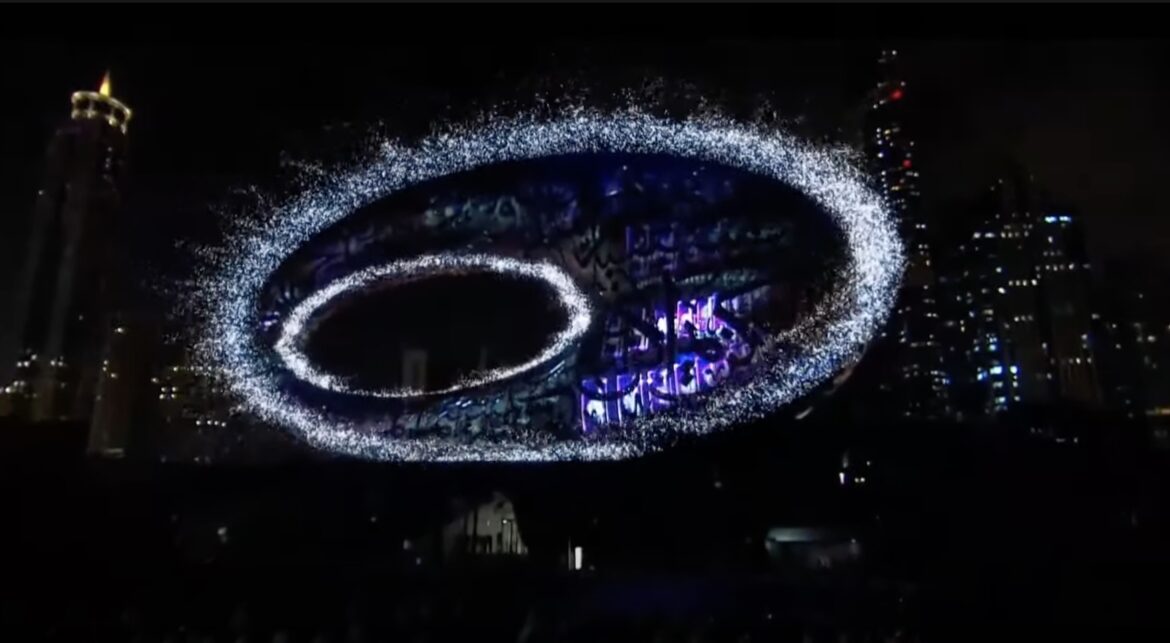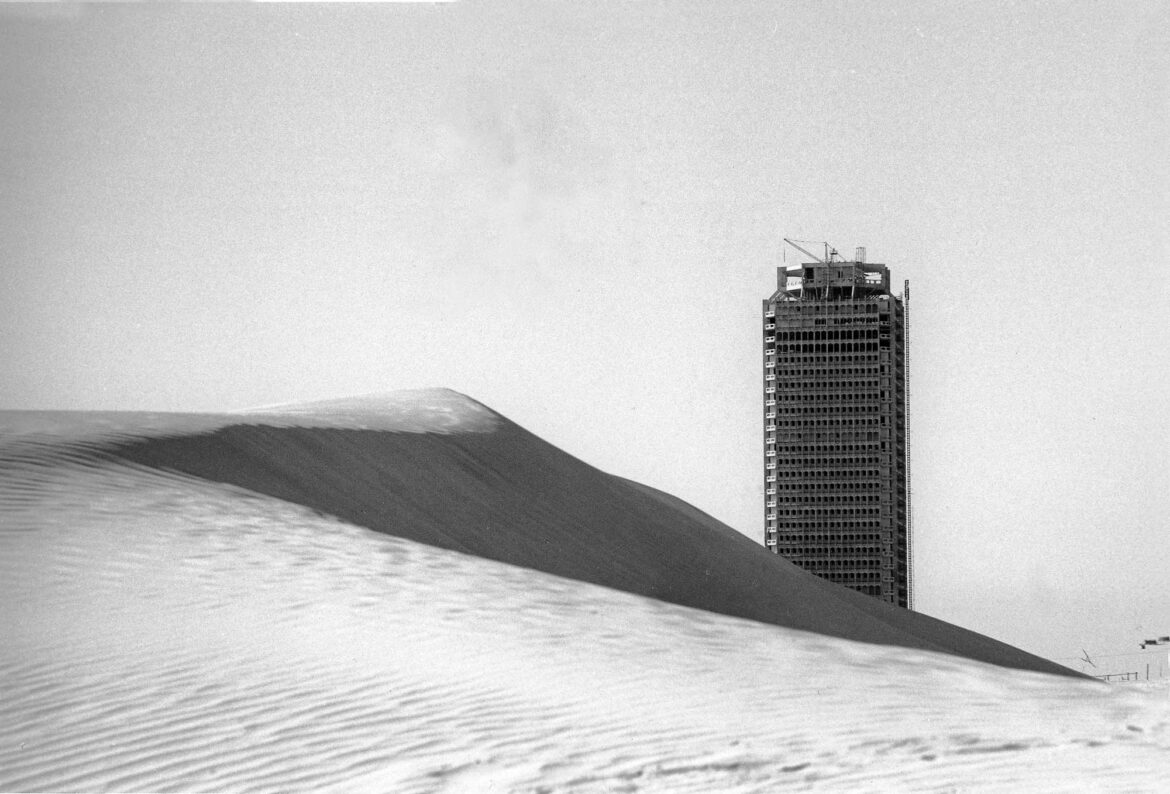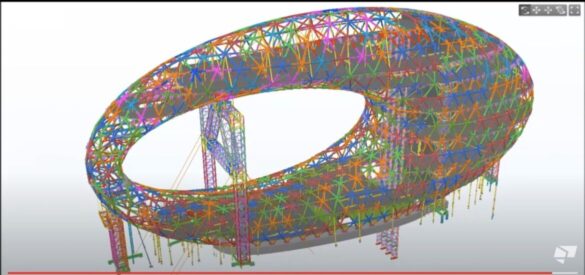The past never leaves us, and the future is already here.
— Lewis Mumford, 1966
22 April 2022
On or around February 18, 2022, a “spaceship” allegedly landed inside a new building on Dubai’s Sheikh Zayed Road. To receive it, the upper northern corner of the building opened up, as one might unlatch a toy’s battery compartment. Some sources claimed that the spaceship arrived from the future; others confessed that it was all CGI effects.*
A few evenings later, the much anticipated Museum of the Future opened in Dubai. In a city where deadlines are counted down like ticking bombs in action movies, this building’s crew could not even predict the job’s completion date. The opening, let alone the museum’s content, remained unannounced for months, even years. The future, it was rumored, remained out of reach.
At the opening two months ago today, the building’s exterior was on full display, cascaded over by illusions and pan-flute music. Traffic on Dubai’s arterial highway was rubbernecked. Attending VIPs arrived not to enter the building but to look at it. No surprise that the YouTube clip captures invitees filming the facade with smartphones. They were clearly documenting a showpiece.
Some people agree with the National Geographic blog post that listed the building among the world’s “fourteen most beautiful museums,” even before it had opened. Other observers find that the building’s form follows a pattern already woven in a city of funny shapes and distorted horizons. And then there are those forever wary of any shiny surface that might obscure lurking truths. In the case of this building, we are literally called upon to read its surface, bedecked in a poem.
In presentations, the building’s South African architect, Shaun Killa, does not volunteer much reason for the building’s bulbous shape. (One source says it “represents humankind.”) More often, the architect points to the spot where he prescribed absolutely no steel. He describes the donut middle as the “void.” In November 2021 during a talk at Al Serkal Avenue, Killa said that the void represents the future that we cannot know. Killa and the architects of his firm are contracted to manage time in spreadsheet schedules; they operate advanced modeling software to visualize futures, yet they say they do not know how to represent the future.
In a followup post at National Geographic, Killa reports that “bright ideas [will come] out of the void.” We know, however, that the future does not arrive out of nothing. The future is made up of matter and forces that exist today. But here’s the thing: Most architects, even if they deny it with all their heart, relish the possibility of a blank slate, or a tabula rasa. The idea of the tabula rasa is most often understood in terms of space. Killa reminds us that the tabula rasa is also a fantasy about time—or rather the removal of time.
The void, according to Killa, also represents “innovation.” Innovation performed at the Museum of the Future has to do with the building’s structural “complexity.” In this case, complexity did not address any problem beyond the building’s arbitrary form. Complexity gets staged simply to show that Dubai can host the act.
In the 1950s, British officials maintained Dubai much like a colony. They once stressed the importance of the “photogenic.” The image was the means by which to declare Dubai’s advancements to the world. Since the mid 1950s, Dubai’s most basic modernization projects have installed surfaces to be seen. Smooth, sanitary, and referential. Even when the city’s infrastructural projects were at their least adorned, images of them were broadcast to present a competent city. For this reason, surfaces should be taken seriously: we should be poised to read them.
In Showpiece City, I investigated how architecture completed by the British firm of John Harris offered more than just shelter from a harsh climate. Architecture got Dubai published in print. When reading coverage of Dubai’s latest buildings and infrastructure in the press of the 1960 and 1970s, one can almost sense reporters searching for that overused word of today. Icon. Instead, they used showpiece, which in its own right is a very effective word. It fuses a verb to a noun. The showpiece, instilled with the latest technology and the finest fittings, exhibited that there was more like it to come. Like a showroom model. A building professed innovation by housing it. A mere existence was a deliberate act.
Since the book’s publication, I’ve registered the way some architects respond to Harris’s work. In it they read a more direct, more impactful, method for designing cities—whether by providing new apartments, road networks, hotel rooms, hospital wards, banking counters, or exhibition halls. This was a time when charted schedules and material specifications were themselves the innovation, the choreography of an aesthetic. Architecture, for example, housed the capacity to declare and document the birth of a child. It must have been fulfilling work for an architect. That realization can invoke a nostalgia among architects for a time when they designed things that people actually used. I admit that I also saw work by Harris’s firm this way. It would take time for me to realize that there was no actual rift between this architecture and what happens today. There is no rift, say, between designing crucial hospitals and wrapping complex calligraphic shapes around a void. They are both about delivering convincing surfaces.
Architects have been deployed for many decades to assemble Dubai’s scenography. John Harris was an early character in the story of how architecture made Dubai, and, as he admitted, one of many professionals moving through the constant spin of a revolving door. The arrival of architects like Harris paved the way for more architects to come. Shaun Killa claimed in an interview that he was “changing the way people think about architecture.” But really, Mr. Killa is part of a long lineage of professionals hired to create change. They continue to arrive every year.
* The tweet that included the video appears to have been removed from the Twitter account of Dubai Media Office. You can still watch video here.
